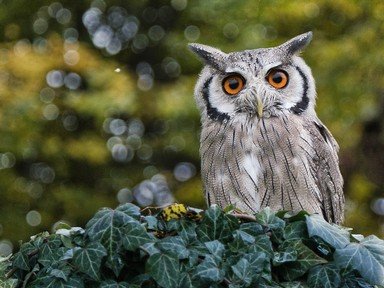Quiz Answer Key and Fun Facts
1. To what order of birds is the owl most closely related?
2. Which of the following best describes the hunting habits of most owls?
3. How do owls consume their food once they've caught it?
4. It is often difficult for untrained observers to see owls in the wild. Which of the following is NOT a reason that owls can be tricky to spot?
5. Some owls are active throughout the night, but this is not the case for most owls. During which part of the night are owls typically most active?
6. Male owls have a higher vocal pitch than female owls.
7. Because sound is so important to owls, their ears have several unique features. Which of the following is NOT commonly true of owl ears?
8. Owls have very poor eyesight compared to humans; in full sunlight, owls are completely blind.
9. Owls have been around for millions of years. The oldest owl fossils found have been dated to what epoch? (Hint: think of the profession of the people who study fossils.)
10. Owls can have some interesting and descriptive names. Which of the following is NOT a real type of owl?
Source: Author
nakarinna
This quiz was reviewed by FunTrivia editor
crisw before going online.
Any errors found in FunTrivia content are routinely corrected through our feedback system.

